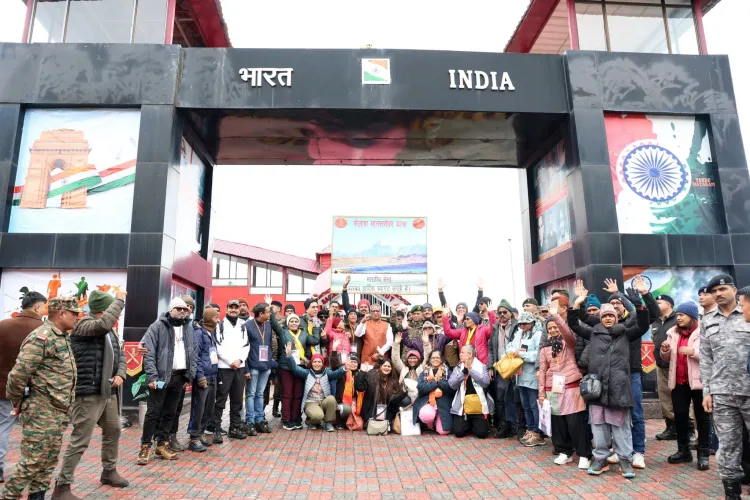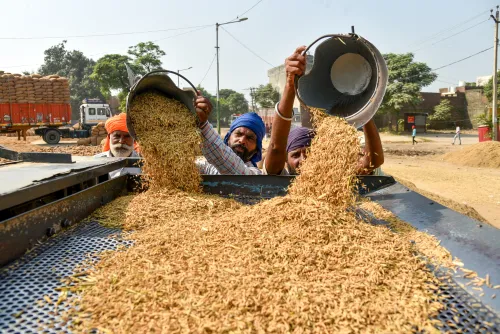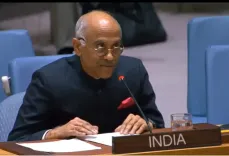What Makes the Kailash Mansarovar Yatra So Spiritually Enriching?

Synopsis
Key Takeaways
- Kailash Mansarovar Yatra offers a spiritually enriching experience.
- Participants express profound gratitude for the arrangements made.
- Significant improvements in hygiene and accommodation have been noted since 2019.
- Collaborative efforts between Indian and Chinese authorities have enhanced the pilgrimage experience.
- The Yatra is described as both physically challenging and spiritually uplifting.
Gangtok, 14 July (NationPress) The Kailash Mansarovar Yatra through the Nathu La route is garnering extensive acclaim for its exceptional arrangements and execution, hailed as a spiritually rewarding experience by pilgrims and officials alike.
Rajendra Chettri, the Chief Executive Officer of the Sikkim Tourism Development Corporation (STDC), labeled the current Yatra a significant success, citing overwhelmingly positive responses from participants.
Chettri reported that the fourth group has concluded their sacred pilgrimage and is now traveling towards Lhasa, while the fifth batch is stationed at Sherathang, preparing for the transition into Tibet.
On Monday, the STDC CEO plans to visit Nathu La to personally oversee the arrangements for the movement of the fifth batch into Tibet.
"The Yatris are incredibly pleased with the facilities provided by STDC," Chettri noted, adding that "at any given time, two batches are present in the Tibetan area, with one entering and the other returning."
He mentioned that apart from the initial group, which consisted of 36 pilgrims, most batches include 45-48 Yatris accompanied by two Liaison Officers assigned by the Ministry of External Affairs (MEA).
The last batch is scheduled to leave on August 7, cross into Tibet on August 12, and return to India by August 23, with all pilgrims expected to head home by August 24.
Chettri emphasized the advancements made since the last Yatra in 2019, particularly in hygiene and accommodation.
He highlighted the cooperation with Chinese authorities for the Yatra, stating, "This year, even the Chinese officials have been welcoming and supportive."
Pilgrims have described the journey as profoundly transformative. Many expressed gratitude towards the administration and relevant authorities for ensuring a seamless pilgrimage experience.
A female pilgrim who embarked on the Yatra with her husband shared her emotional journey, saying, "It is by the grace of God that we were chosen for this Yatra. Everything was so well-managed that we never felt discomfort. The reception was heartwarming as Yogi ji himself greeted us and presented gifts, marking a divine beginning to our journey."
She described the trip to Mount Kailash as "deeply spiritual," adding, "Even now, I get chills remembering the moment. I am thankful to everyone involved—both Indian and Chinese authorities, along with the thousands working tirelessly behind the scenes. Our journey was not just smooth but truly divine."
Ravi Verma, a pilgrim from Pune, remarked that the experience was both physically and spiritually uplifting.
"Despite the long trek and the high altitude, I didn’t experience any of my usual knee or muscle pains. That felt miraculous," he explained.
He described his journey through Yamadwar, Deraphuk, and Dolma Pass, which is one of the toughest parts of the Yatra.
"Even Dolma Pass, with its low oxygen and steep incline, felt safe and manageable. Collecting water from Gaurikund was a memorable moment," he said.
Verma also shared that his parents completed the Yatra on foot in 1997, covering almost 500 kilometers. "Their dedication inspired me. While I covered only 40 kilometers, the experience was equally divine. I believe all my life's success is a blessing from Mount Kailash."
Another pilgrim, Devendra Tiwari from Bhopal, described the Yatra as smooth and fulfilling. He praised the discipline of fellow pilgrims and expressed thanks to the Government of India, MEA, ITBP, and STDC for their coordination.
"Not even rain or clouds hindered our journey. We completed darshan and puja without any issues. I genuinely feel blessed," he concluded.









